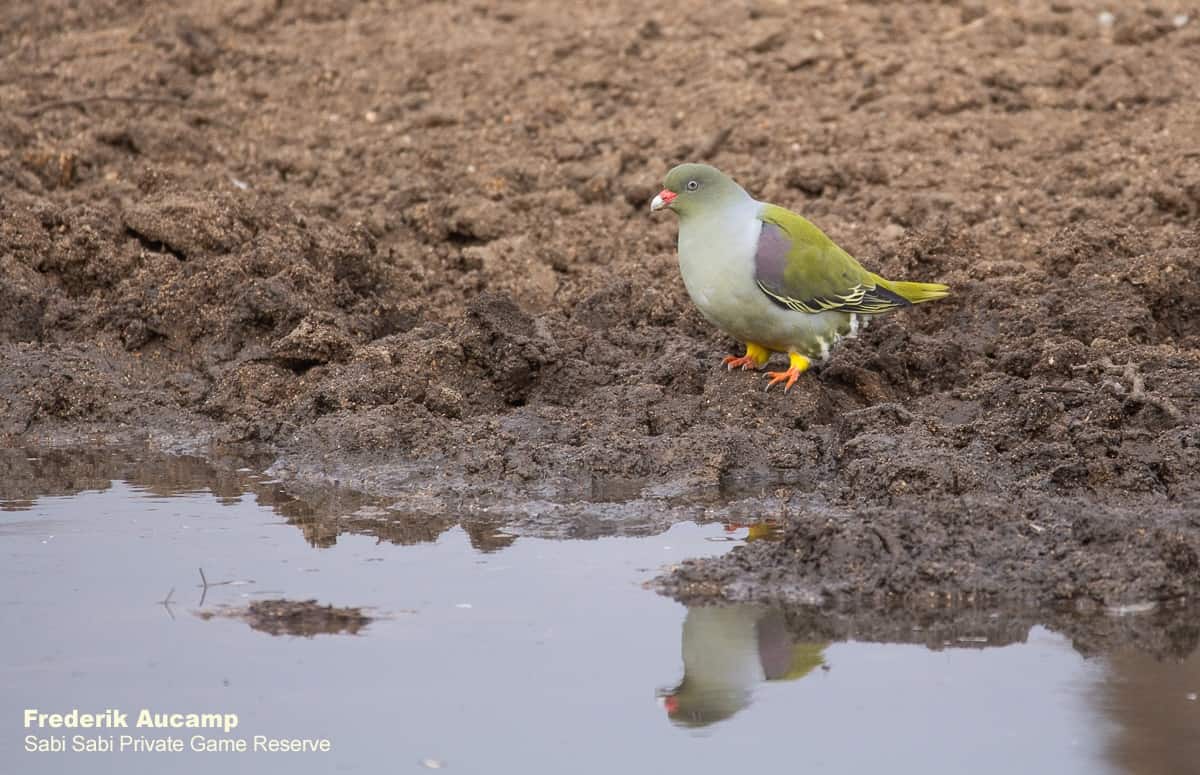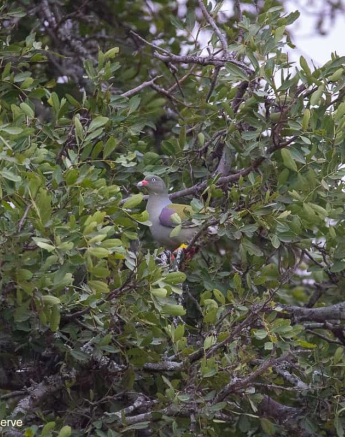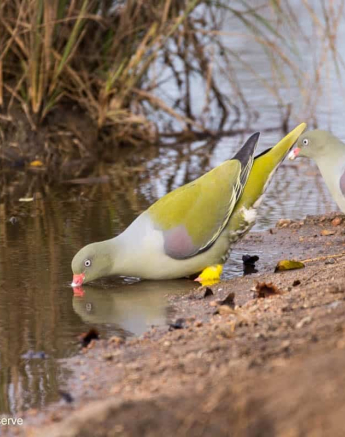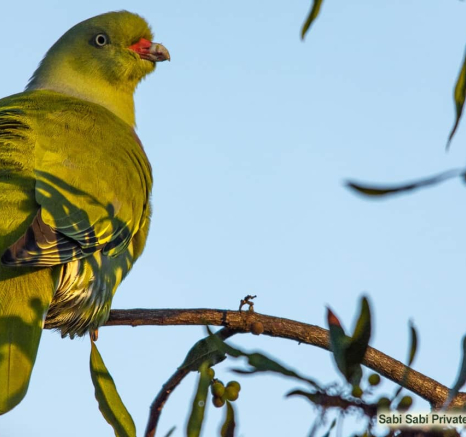African Green Pigeon
on Oct 18, 2019Species name: African Green Pigeon
Scientific name: Treron calvus
Weight: Male: 160 – 280g Female: 130 – 220g
Overall length: Male: 25 – 30cm Female: 25 – 30cm
General habitat: They prefer Savanah, woodland, forest, and bushveld areas. In Sabi Sabi you might often find them in the thick leaf canopies of Jackalberry trees.
Diet: They eat a variety of different fruits, especially Jackalberry fruits and figs from Fig trees.

There are plenty of birds throughout the vast Sabi Sabi Private Game Reserve, but not all of them are as colourful and vibrant as the African Green Pigeon. From a distance they might not seem as colourful as you might have thought but do yourself a favour and look through a pair of binoculars - only then will you start to see their true beauty. If you view them from the bottom to the top you will firstly notice their bright orange/red legs and feet; their thighs are covered with vibrant yellow feathers; the bottom part of their body and the head and neck area are greyish green in colour; the back and tail has a more olive green to yellowish green colour; and finally, you will see their white eyes and their bright red and white beak. This colouration gives them the perfect camouflage in their environment while searching for fruit in the tree canopies and when situated on their nesting sight. They are also extremely acrobatic and will sometimes hang upside down like what some parrots do to get to fruits on trees.
African Green Pigeons will normally nest in the thick leaf canopies of trees. The nest is saucer shaped and usually constructed with branched twigs. The twigs are quite thick and unlike most doves, African Green Pigeons won’t just pick twigs up from the ground, they will rather break twigs off from trees. The nest is usually lined with soft leaves from trees. Males are known to collect the building material whereas the females will usually construct the nest.
They will normally nest between September and December. The female will usually lay two eggs and both male and female will incubate the eggs. The eggs will hatch into chicks after thirteen to fourteen days of incubation. Both male and female will assist in feeding the chicks.
Even though they are mostly found in thick leaf canopies of trees, African Green Pigeons will sometimes bunch together in dead trees or any exposed area during cold days, allowing them to warm up in the sun’s rays.
What I find fascinating is that African Green Pigeons may sometimes fly to the ground and eat soil for certain nutrients, this behaviour is known as geophagy.
They are amazing birds and truly stand out as one of the prettier birds in the bushveld. Come join us on a Sabi Sabi safari and you might just get the chance to see or even hear this vibrant bird.
My Memorable Sighting
My most memorable sightings of African Green Pigeons are when they utter their unique call. Sometimes I drive to a riverine area where there are lots of fruit-bearing trees. I will switch the safari vehicle off and then just sit and listen. African Green Pigeons are not the easiest to spot because of their unique colours that blend in with the tree canopies, but luckily their very distinctive call gives their position away very easily. Their call starts off with some clicking trills, followed by high pitched whistling, and finally ended off by frog like croaks and grunts almost sounding like Tarzan yelling out while beating his fists on his chest. This is probably one of my favourite bird calls in the African bush, and whenever I hear the African Green Pigeon calling, it makes me feel right at home.
Photo Content










